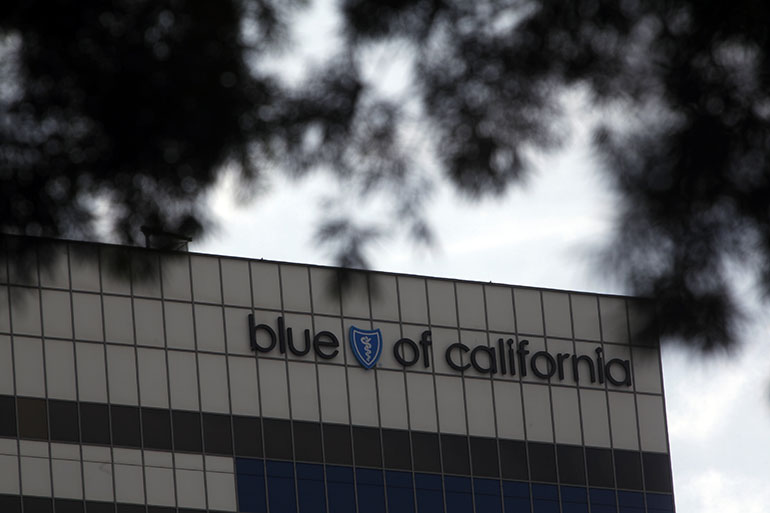A class-action lawsuit filed earlier this month claims that Blue Shield of California stiffed consumers on more than $34 million dollars in refunds on premiums they paid in 2014.
Federal law requires insurers to issue refunds if they don’t spend at least 80 percent of premium dollars on medical care or on improving the quality of care.
The lawsuit, filed July 1 in Los Angeles County Superior Court, argues that Blue Shield improperly counted as medical expenses certain payments it had made erroneously in 2014 — to providers who were not in its network and patients whose coverage had lapsed. By counting those mistaken payments as legitimate medical expenses, Blue Shield pushed itself closer to the 80 percent threshold, thus reducing the size of the refunds it owed, according to the complaint.
Under the consumer refund rule, those payments should have been logged as administrative expenses, the suit says, and Blue Shield customers are therefore entitled to a bigger refund.
“If Blue Shield is allowed to get away with that, not only will its customers be cheated out of $34 million; the door will be left open for other insurers to adopt Blue Shield’s dishonest accounting approach,” Michael Johnson, a former Blue Shield of California public policy director, wrote in a letter to the insurer’s regulator, the Department of Managed Health Care. His letter makes the same allegations as the ones contained in the lawsuit.
A department spokesperson said Johnson’s letter is under review.
Blue Shield of California chalks the payment errors up to chaos in the first year people signed up for individual and family coverage under the Affordable Care Act.
“These payments occurred amid widespread market confusion and uncertainty about provider networks and eligibility during the inaugural Covered California year in 2014,” Sean Barry, a Blue Shield spokesman, said in a written statement.
“We believe that the allegations are misinformed and incorrect, and that we are in compliance with all the rules,” he wrote.
The rebate rule, part of the Affordable Care Act, is intended to contain the cost of health coverage by limiting the share of premiums insurers can spend on administrative functions, executive salaries, overhead and profits. If an insurer spends only 75 percent of premium dollars on care, for example, it must send refund checks to enrollees equal to 5 percent of the premiums they paid.
“Blue Shield understood that the more they reported as medical spending, the less they would have to pay out,” said Johnson, who explained that he resigned from Blue Shield of California in 2015 because he disagreed with how it used its nonprofit status. The insurer lost its tax exemption in August 2014.
Johnson says he initiated the class-action suit against Blue Shield, though he is not listed among the plaintiffs, who are two Blue Shield policyholders from 2014 acting on behalf of almost 450,000 other plan members.
Blue Shield filed its own lawsuit against Johnson last year, claiming his activities since leaving the company amount to a breach of contract. Johnson says he is whistleblowing. That case is still pending in court.
The lead attorney for the plaintiffs in the refund case against Blue Shield is Washington, D.C.-based Jay Angoff, former director of the Center for Consumer Information & Insurance Oversight, a federal agency that helps implement many provisions of the Affordable Care Act, including the consumer rebate law. Angoff declined to comment for this story.
Blue Shield of California, California’s third largest health insurer, has had some difficulty meeting the 80 percent medical care ratio. In 2014, it refunded more than $64 million to consumers statewide, the highest total of any insurer in the non-group market in the United States, according to the U.S. Health and Human Services. The company said that’s partly because it’s a large plan serving a large state.
Timothy Stoltzfus Jost, professor emeritus at the Washington and Lee University’s law school, said there’s good reason to examine how all health insurers, not just Blue Shield of California, categorize the spending that affects consumer rebates.
“There is quite a bit of discretion in the rule as to how expenses are counted,” Jost said. The biggest gray area may be in accounting for expenses that improve quality of care, he said.
Jost noted that the guidelines for categorizing insurance company expenses under the consumer rebate law are very detailed and “many pages long.”
“Capturing every conceivable expense and classifying it one way or the other” is very difficult, he said. ”I am sure there are some issues there that do not clearly fall on one side or another.”
Health insurers have paid out more than $2.4 billion dollars in refunds to consumers since 2011, the first year the law was in effect, according to federal government data. In 2014, 5.5 million people received refunds, averaging $139 or less per family.
Health insurers must submit reports to the federal government by the end of this month to determine how much of their 2015 premiums consumers will get back by Sept. 30.
The 80 percent ratio is difficult for insurers to hit even though they are informed by “extensive data” when they set their premium rates, said Charles Bacchi, CEO of the California Association of Health Plans.
“Because it is impossible to know the exact amount of medical spending enrollees will need in the upcoming year, some people may get a rebate if that estimate was off,” Bacchi said.


